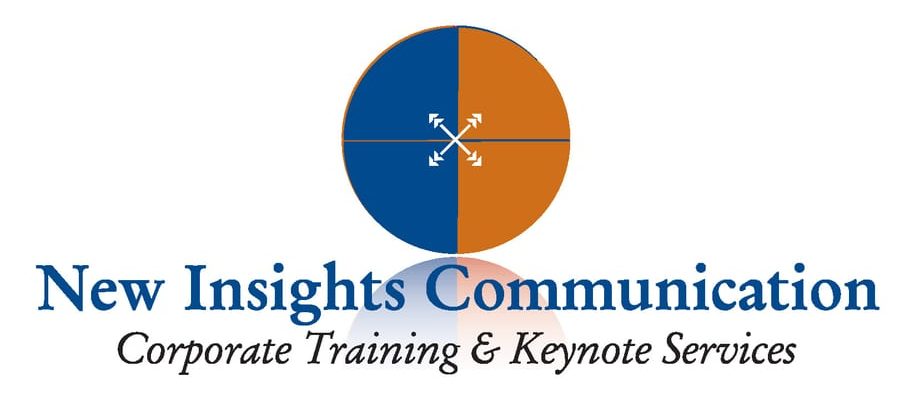Have you ever changed lanes while driving, only to discover from the honk of someone else’s horn that another car was in your “blind spot”? The Communication Highway can be like that, too. Everyone has an Achilles heel or three when it comes to impaired communication. In fact, the “blind spots” you have while driving down the Communicator Highway can cause accidents when you change lanes too quickly or don’t use your turn signal. Missed communication and mixed communication fall into this category. And you develop relationship “blind spots” when you don’t know where you’re talking from or what talk lanes you’re driving in.
FEELING AS LOW AS A GREASE SPOT ON THE GARAGE FLOOR?
What are some of the blind spots shared by the two groups of communicators, Empathizers (E-types) and Instigators (I-types)? And are their blind spots identical? A recent New Insights Communication poll gives us some starting and startling ideas about these Achilles’ heels:
SELF-CRITICISM … 43.31%
BEING AFRAID OF GETTING NEGATIVE FEEDBACK … 26.92%
PEOPLE NOT LIKING ME … 23.08%
CRITIQUING OTHERS TOO HARSHLY … 7.69%
In the survey, there was no way of telling if the respondents were E-typers or I-typers. Let me analyze the results based on your communicator type.
THE TWO TYPES OF DRIVER RESPONSES TO “BLIND SPOTS”
You can determine your communicator type by asking yourself a single question: “Do I lean toward being more “sensitive” or more “insensitive” in all my relationships? E-types are drivers who wear their feelings on their sleeves, while I-type drivers just want to get past the latest roadblock and do something about it. Neither is better or worse, just different.
1. E-types are prone to using self-criticism excessively. When E-types blame themselves for problems, they can slow down needed life changes or have difficulty thinking of new solutions to old problems.
2. I-types are prone to criticizing others excessively. When I-types blame others for problems, they too can slow down making needed life changes or have trouble sensing new solutions to old problems.
3. E-types are afraid of receiving negative feedback. To an E-type, this means they have failed in their relationship responsibilities. E-types are very concerned about “hurting someone” intentionally or unintentionally.
4. I-types are afraid of receiving no feedback whatsoever. To an I-type, this means they have failed somehow in making progress and change happen. I-types are concerned about “missing the point” on purpose or accidentally.
5. E-types want everyone to like them, and they feel nervous when people don’t like them.
6. I-types want everyone to respect them, and they feel nervous when people ignore them or discount their feedback.
7. E-types worry about being liked. When super-stressed, Empathizers switch talk lanes from feeling bad to unexpectedly acting like a dipstick that causes a relationship collision.
8. I-types worry about being respected. When super-stressed, Instigators switch talk lanes from thinking negatively to unexpectedly talking like a dipstick that causes a relationship collision.
9. Both types gain interpersonal power, flexibility and freedom when they understand and drive more mindfully of the blind spots that each communicator must courageously face alone.
No one wants to be a poor communicator any more than anyone wants to be a poor driver who makes the same driving errors over and over again (and you KNOW that leads to expensive repairs!).
SCAN THE ROAD AHEAD AND USE ALL YOUR MIRRORS TO AVOID TALK ACCIDENTS
Safe driving means you know the “blind spots.” When you know you’re in one, you can take care making turns, and you can make sure you flip on your turn signal to warn a driver behind you that you are changing lanes. Changing lanes abruptly while driving in a blind spot is the leading cause of relationship malfunction and relationship failure to thrive.
ABOUT MANAGEMENT WORKSHOP LEADER AND COMMUNICATIONS PSYCHOLOGIST AND KEYNOTE SPEAKER DR. DENNIS O’GRADY, PSY.D.
The author and developer of the “Talk to Me: Communication Moves To Get Along With Anyone” communication system and book, Dr. O’Grady teaches team members and family members how to productively use the TTM system to drive more safely and sanely on the two-way communicator highway. When communicators change lanes abruptly without signaling, and slide off the road or crash into another driver, talks heat up quickly and rational discussions halt as authorities and tow trucks are called. When you understand how your communicator type thinks and feels AND acts and talks you are in a far better position to drive positively and effectively on the two-way communicator highway. Dennis E. O’Grady, Psy.D. is from Dayton, Ohio, USA.
LINKS FOR PREVIOUS NEW INSIGHTS COMMUNICATION POLLS
Anything Is Possible? People Who Don’t Get Along … What Makes A Person So Difficult To Get Along With … Personality Clashes or Communication Crashes? … What’s The Toughest Emotion You Wrestle With? … Are You An Optimistic Driver On The Two-Way Communication Highway? … The Elephant Stampede … What Makes A Good Leader Great? … Does Your Attitude Work To Make You A Better Leader? … What’s Up With Your Confidence Level? … When You Argue, Are You Always Right? … Are You Shy or Stuck Up? … How Do You Handle Anger? … Are Men or Women Better Communicators? … How Easily Are You Frustrated?
